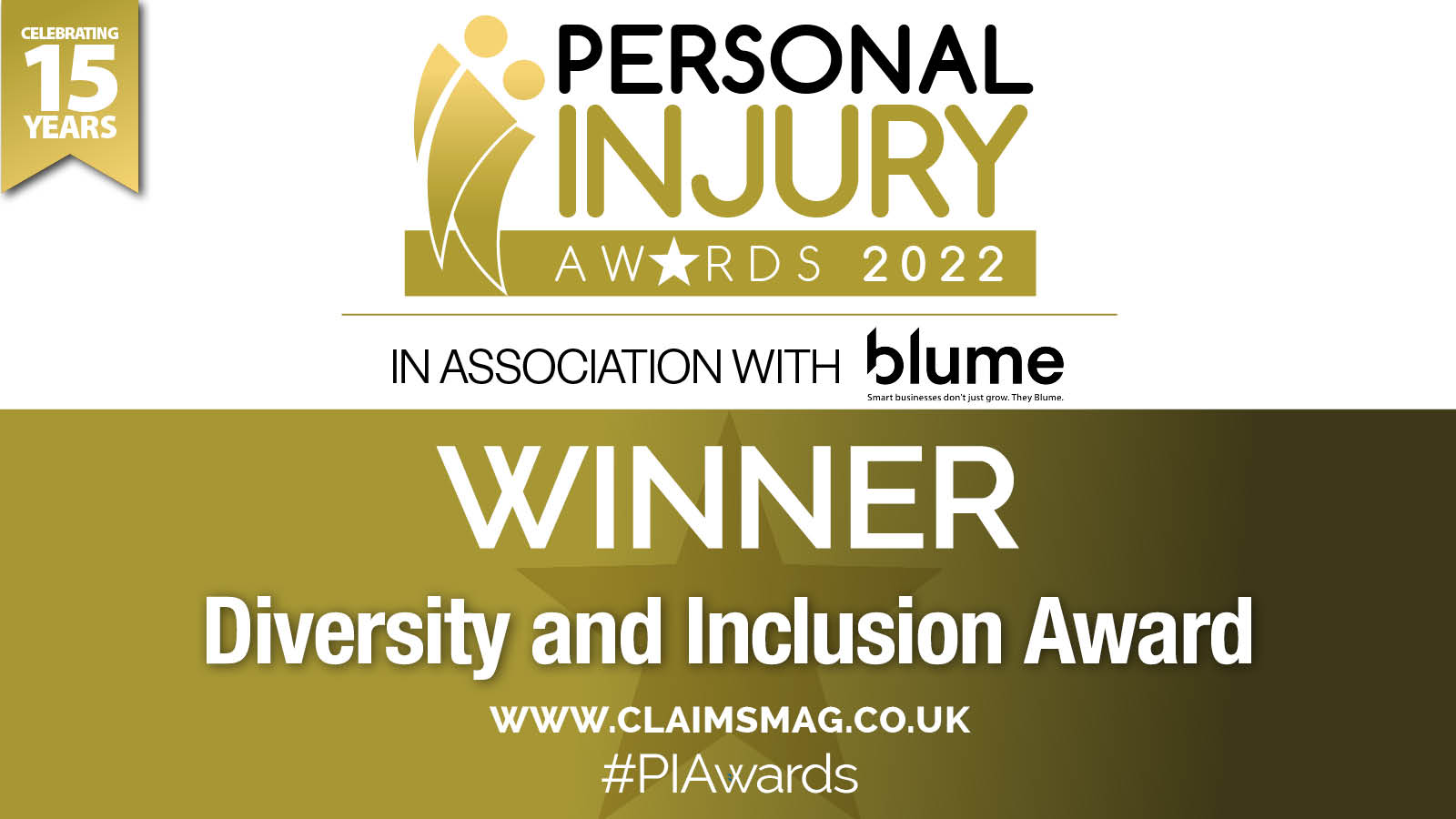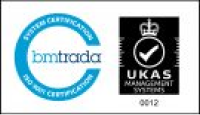<!-- wp:paragraph -->
<p>In this second article in a series covering the Public Law Working Group’s recommendations for best practice for adoption, I consider Chapter 2 of the PLWG report. This section covers the crucial issue of access to adoption records. For children who have been adopted, and their families, the ability to access information on birth families can be vital in facilitating connections and ensuring that the child’s sense of identity is secured. This chapter advocates for a simpler, accessible and streamlined approach to accessing records.</p>
<!-- /wp:paragraph --><!-- wp:paragraph -->
<p>As with the rest of the articles in this series, this will follow the general chronology and sub-headings of the report to ensure consistency and to break the report down into a more bite sized and user-friendly guide to what the report recommends.</p>
<!-- /wp:paragraph --><!-- wp:paragraph -->
<p><strong><u>Introduction</u></strong></p>
<!-- /wp:paragraph --><!-- wp:paragraph -->
<p>It is of huge importance to those who have been adopted to be able to access information about their birth families. Whilst there is of course a need for sensitivity, the historic “shroud of secrecy” that has cloaked adoption for many years is to the clear detriment of all involved. There are several routes to accessing information, most notably via the adoption agency, however, the Courts have seen an increase in requests for access to information, prompting the Working Group to consider whether there is a need for reform.</p>
<!-- /wp:paragraph --><!-- wp:paragraph -->
<p>Following work on the PLWG report starting, the individuals behind a significant amount of the research which formed part of the report, announced a project that seeks to identify and address the barriers to tracing – A briefing paper was prepared on this which the PLWG notes covers this area in greater detail, including some important recommendations (practitioners may find this briefing paper of use).</p>
<!-- /wp:paragraph --><!-- wp:paragraph -->
<p><strong><u>Routes To Obtaining Access to Records</u></strong></p>
<!-- /wp:paragraph --><!-- wp:paragraph -->
<p>The Working Group identified numerous routes to obtaining access to records. These routes are dependant on who is making the application and the date on which the adoption took place.</p>
<!-- /wp:paragraph --><!-- wp:paragraph -->
<p>Pre-Commencement Adoptions are those adoptions which took place prior to 30 December 2005, the following are routes to obtain access to records:</p>
<!-- /wp:paragraph --><!-- wp:list -->
<ul class="wp-block-list"><!-- wp:list-item -->
<li><span style="text-decoration: underline;">Adults adopted before 12 November 1975</span> – can apply to the General Register Office (GRO) for a copy of their original birth certificate. The GRO must also provide certain information from the Adoption Contact Register. If the applicant does not know the original names of their birth parents (as is common pre-1975), counselling is mandatory. Those adults can apply to the GRO who will send forms to the applicants relevant Local Authority or Adoption Support Agency (ASA). Once the birth certificate is obtained, adoption records can be applied for.</li>
<!-- /wp:list-item --><!-- wp:list-item -->
<li><span style="text-decoration: underline;">Those adopted between November 1975 and December 2005</span> – can also apply to the GRO in the same way as above. Birth parents were not offered anonymity during this period so counselling is not a requirement.</li>
<!-- /wp:list-item --><!-- wp:list-item -->
<li><span style="text-decoration: underline;">Court application post GRO information</span> – the information provided by the GRO above will identify the Court who ordered the adoption, an application can then be made for the details of the adoption agency, once they are identified the adoption agency can be applied to for records. These forms of application are usually made by the Local Authority or ASA. If the adoption agency is not in possession of the files, the court directly can provide this information.</li>
<!-- /wp:list-item --><!-- wp:list-item -->
<li><span style="text-decoration: underline;">Intermediary applications</span> – under The Adoption Information and Intermediary Services (Pre-Commencement Adoptions) Regulations 2005, an individual can apply for information. Such information can not be disclosed without consent of the subject of the information. This route may be subject to charge whereas other routes are not. This route is available to those who have been adopted, their birth relatives and anybody under s.1 CFA 2014 can apply.</li>
<!-- /wp:list-item --><!-- wp:list-item -->
<li><span style="text-decoration: underline;">Subject Access Request</span> – adopted adults can apply to the Local Authority for any information about time they have spent in care, these records fall outside the remit of adoption regulations and are governed by data protection legislation. These requests must be dealt with in line with the Data Protection Act 2018.</li>
<!-- /wp:list-item --><!-- wp:list-item -->
<li><span style="text-decoration: underline;">Direct court applications</span> – anybody can apply pursuant to rules 53(4) Adoption Rules 1984 and 32(6) Magistrates Courts (Adoption) Rules 1984. Such documents require leave of the court to be subject to disclosure. This route is not limited to specific individuals.</li>
<!-- /wp:list-item --><!-- wp:list-item -->
<li><span style="text-decoration: underline;">Exceptional application</span> – orders can be made against the Registrar General to disclose information to obtain a certified copy of birth under s.79(4) ACA 2002 on application by any person only in ‘exceptional circumstances’.</li>
<!-- /wp:list-item --></ul>
<!-- /wp:list --><!-- wp:paragraph -->
<p>Post-Commencement Adoptions are those adoptions which took place on or after 30 December 2005, applications for information regarding these adoptions are more regulated, with the following being routes to obtain access to records:</p>
<!-- /wp:paragraph --><!-- wp:list -->
<ul class="wp-block-list"><!-- wp:list-item -->
<li><span style="text-decoration: underline;">S.60(2)(a) ACA 2002</span> – allows an adopted adult to apply to the adoption agency for information which will enable them to obtain their birth certificate. The adopted person or the adoption agency can then apply to the GRO. The adoption agency can apply to prevent disclosure in exceptional circumstances.</li>
<!-- /wp:list-item --><!-- wp:list-item -->
<li><span style="text-decoration: underline;">S.60(2)(b) ACA 2002</span> – allows an adopted adult to apply to the adoption agency for the information shared with adopters during proceedings (this will be the Child Permanence Report and other relevant information).</li>
<!-- /wp:list-item --><!-- wp:list-item -->
<li><span style="text-decoration: underline;">S.60(4) ACA 2002</span> – allows an adopted adult to apply for those documents listed in rule 14.18 and PD14F FPRs. Such disclosure is subject to redaction (unlike under s.60(2)).</li>
<!-- /wp:list-item --><!-- wp:list-item -->
<li><span style="text-decoration: underline;">S.61 ACA 2002</span> – allows a person to apply for information from an adoption agency which is related to an adult. There is a discretion to provide this and the agency may need to seek permission to disclose information, and there is a requirement to take reasonable steps to obtain the views of those adults to whom the information relates. Under s.62, a similar provision exists to obtain protected information about a child.</li>
<!-- /wp:list-item --><!-- wp:list-item -->
<li><span style="text-decoration: underline;">Subject Access Request</span> – as above, an individual can apply for their care records pursuant to the Data Protection Act 2018.</li>
<!-- /wp:list-item --></ul>
<!-- /wp:list --><!-- wp:paragraph -->
<p>Finally, there are two routes under the Family Procedure Rules 2010 to obtain information. Firstly, pursuant to Rule 14.24 which allows documents to be disclosed by direction of the court. Secondly, pursuant to Rule 14.14 which provides the Court with discretion to communicate information. There is no restriction or guidance on the use of Rule 14.14.</p>
<!-- /wp:paragraph --><!-- wp:paragraph -->
<p>The PLWG Report appends a flowchart at Appendix A of Chapter 2 which shows the routes to obtaining the original birth certificate, seeking information via intermediary services, pre-commencement access, and post-commencement access.</p>
<!-- /wp:paragraph --><!-- wp:paragraph -->
<p><strong><u>Which Agencies Hold Records</u></strong></p>
<!-- /wp:paragraph --><!-- wp:paragraph -->
<p>Adoption records are, in the first instance, kept by the relevant adoption agency, that being the agency responsible for placing the child. This could the via a Local Authority or voluntary agency. In 2020, responsibility for disclosure was passed from the local adoption agency level to regional adoption agencies. The expectation being a smaller number of more structured and resources agencies should be able to better address the deficits seen in adoption.</p>
<!-- /wp:paragraph --><!-- wp:paragraph -->
<p>The regional agencies tend to hold responsibility for adoption support, but there remains confusion in where to seek support. Some agencies contract work and some do not. In addition, many records are still held in paper format.</p>
<!-- /wp:paragraph --><!-- wp:paragraph -->
<p>Supporting an individual to access records is a significant time commitment which the responsible agencies in England and Wales simply do not have the resources to dedicate. There are lengthy waiting lists as demand outweighs available resources.</p>
<!-- /wp:paragraph --><!-- wp:paragraph -->
<p><strong><u>Applications to Court</u></strong></p>
<!-- /wp:paragraph --><!-- wp:paragraph -->
<p>Usually reserved for situations where difficulties have been encountered in accessing information via the adoption agency, though there is no restriction to only these situations. An issue with applications through the courts is that many courts have closed or merged into combined centres; there is no register or facility which identifies where records from these courts will be.</p>
<!-- /wp:paragraph --><!-- wp:paragraph -->
<p>There is limited guidance available to courts on what the approach should be for adoption disclosure applications made pursuant to the general powers in rules 53(4) and 32(6) and FPR 14.14 and 14.24; judges across the country have raised concerns about how to determine these applications.</p>
<!-- /wp:paragraph --><!-- wp:paragraph -->
<p>There is only one reported case which deals with this issue, in <em>Re X (Adopted Child) Access to Court File</em> [2014] EWFC 33, several principles were laid down in relation to an application by the daughter of an adopted person where the adopted person and adoptive parents were all deceased, the principles were:</p>
<!-- /wp:paragraph --><!-- wp:list {"ordered":true,"type":"upper-roman"} -->
<ol style="list-style-type:upper-roman" class="wp-block-list"><!-- wp:list-item -->
<li>The court has discretion whether to disclose information contained within the court file.</li>
<!-- /wp:list-item --><!-- wp:list-item -->
<li>The court should have regard to all the circumstances and exercise this discretion in a just manner.</li>
<!-- /wp:list-item --><!-- wp:list-item -->
<li>Maintaining confidence in the confidentiality of adoption files is an important public policy consideration.</li>
<!-- /wp:list-item --><!-- wp:list-item -->
<li>The time since the order and whether any affected parties are deceased are both important considerations.</li>
<!-- /wp:list-item --><!-- wp:list-item -->
<li>The connection between the applicant and the information sought should be considered.</li>
<!-- /wp:list-item --><!-- wp:list-item -->
<li>The court must take account of the impact of disclosure on any relevant third parties (though it should consider if any safeguards could mitigate this).</li>
<!-- /wp:list-item --></ol>
<!-- /wp:list --><!-- wp:paragraph -->
<p>Whilst this guidance provides some structured approach, in practice judges report this guidance is of limited assistance as the facts of Re X were so uncontroversial with respect to making the disclosure.</p>
<!-- /wp:paragraph --><!-- wp:paragraph -->
<p><strong><u>Current Practice</u></strong></p>
<!-- /wp:paragraph --><!-- wp:paragraph -->
<p>The PLWG conducted a country wide survey to consider how disclosure applications are dealt with. From this survey, the Working Group identified 10 key findings:</p>
<!-- /wp:paragraph --><!-- wp:list {"ordered":true} -->
<ol class="wp-block-list"><!-- wp:list-item -->
<li>Most requests are from adults regarding pre-commencement adoptions.</li>
<!-- /wp:list-item --><!-- wp:list-item -->
<li>Many services noted insufficient resources to meet demand.</li>
<!-- /wp:list-item --><!-- wp:list-item -->
<li>Service availability varies across the country.</li>
<!-- /wp:list-item --><!-- wp:list-item -->
<li>The approach to applications, and the responses received, is inconsistent.</li>
<!-- /wp:list-item --><!-- wp:list-item -->
<li>Support agencies and the courts both identified an increase in demand.</li>
<!-- /wp:list-item --><!-- wp:list-item -->
<li>The judiciary deal with applications inconsistently, including the detail required on the application, the criteria applied in deciding, the level of judge who deals with applications, and whether applications require a hearing.</li>
<!-- /wp:list-item --><!-- wp:list-item -->
<li>Courts set their own timetables and some courts do not prioritise requests.</li>
<!-- /wp:list-item --><!-- wp:list-item -->
<li>There is confusion about the difference in pre and post commencement adoption.</li>
<!-- /wp:list-item --><!-- wp:list-item -->
<li>There are few services available for pre-commencement adoptions.</li>
<!-- /wp:list-item --><!-- wp:list-item -->
<li>A quarter of courts charge a fee, with there being no standard fee.</li>
<!-- /wp:list-item --></ol>
<!-- /wp:list --><!-- wp:paragraph -->
<p>The process as it stands is inconsistent, confusing, time consuming and inadequate. Given the importance of access to information for adopted people and their families, the current practice is not good enough.</p>
<!-- /wp:paragraph --><!-- wp:paragraph -->
<p><strong><u>Recommendations</u></strong></p>
<!-- /wp:paragraph --><!-- wp:paragraph -->
<p>The report makes several recommendations, all of which were agreed and endorsed by the overwhelming majority of respondents to the consultation. These recommendations are explored below, however an overriding theme from those concerned was:</p>
<!-- /wp:paragraph --><!-- wp:paragraph -->
<p><em>“…that adoption should be recognised for the lifelong process that it is, and that those affected should have access to services and support at a point in their lives when it is needed.”</em></p>
<!-- /wp:paragraph --><!-- wp:paragraph -->
<p><span style="text-decoration: underline;">Training</span> – Experiential training may assist professionals to understand the real world impact of adoption. Those who prepare adoption reports should receive sufficient training and this should be available to all professionals across the board of adoption work. The Working Group also recommend that adopters receive training on information sharing and contact with birth relatives.</p>
<!-- /wp:paragraph --><!-- wp:paragraph -->
<p><span style="text-decoration: underline;">Service Information</span> – Comprehensive information should be available online across the spectrum of relevant stakeholders, including adoption agencies, support services, the courts and more. There should be simple advice on how to apply for a birth certificate, adoption records, and how to engage with intermediary services. The Working Group has prepared a template application form, but recommends a template is formulated by Adopt England and NASW to ensure national consistency.</p>
<!-- /wp:paragraph --><!-- wp:paragraph -->
<p><span style="text-decoration: underline;">National Registers</span> – There needs to be greater clarity as to the whereabouts of adoption records:</p>
<!-- /wp:paragraph --><!-- wp:paragraph -->
<p><em>“www.familyconnect.org.uk and www.adoptionsearchreunion.org.uk are of great assistance to service users and professionals alike, and Family Connect is developing into the ‘go to’ hub for finding out about adoption agency records and how to find relatives lost through adoption.”</em></p>
<!-- /wp:paragraph --><!-- wp:paragraph -->
<p>The PLWG endorses a central and maintained source of adoption information. All agencies endorsed the need for an easier way to locate records and a National Register of Court Adoption Records should be established via cooperation with HMCTS.</p>
<!-- /wp:paragraph --><!-- wp:paragraph -->
<p><span style="text-decoration: underline;">Record Retention</span> – There should be a protocol to standardise archiving, retention and retrieval of information. The PLWG endorses the recent good practice guide, <a href="https://www.accesstocarerecords.org.uk/wp-content/uploads/2024/03/CALGG_FINAL-adoption-and-care-experienced-records2024.pdf" target="_blank" rel="noreferrer noopener">The records of Adopted and Care-Experienced People – Good Practice Guidance for Record-Keepers and Care Professionals</a>. Further, it is recommended that adoption records are retained for at least 100 years, it being recognised that descendants of adopted people have a stake in making applications many years down the line. This 100 year period would reflect that already in place with the courts.</p>
<!-- /wp:paragraph --><!-- wp:paragraph -->
<p><span style="text-decoration: underline;">Counselling</span> – Under Schedule 2 ACA 2002, counselling is only required for those adopted pre November 1975. Even then, the counselling is in the form of advice, guidance and support, not therapeutic counselling:</p>
<!-- /wp:paragraph --><!-- wp:paragraph -->
<p><em>“The lack of definition of the term counselling in adoption legislation and guidance has created confusion over the years, and if this cannot be resolved we recommend that agency workers and their service users should decide together what kind of support might be of use in any given situation.”</em></p>
<!-- /wp:paragraph --><!-- wp:paragraph -->
<p><span style="text-decoration: underline;">Timescales</span> – Applications should be dealt with in consistent, appropriate and realistic timescales. For courts, there should be a national protocol providing a standard procedure; 14 days for acknowledgment, 28 days to locate a file, and full response within 4 months are recommended as appropriate. Good communication is key where there are any delays.</p>
<!-- /wp:paragraph --><!-- wp:paragraph -->
<p>For adoption agencies, there should be timescales compatible with the court process. Whilst consideration needs to be given to resources, it is important for agencies to meet reasonable timescales. The PLWG advises a response within 1 month (in line with SARs)l allowing for a response within 4 months for complex requests.</p>
<!-- /wp:paragraph --><!-- wp:paragraph -->
<p>Priority should be given to pre-1976 adoptions.</p>
<!-- /wp:paragraph --><!-- wp:paragraph -->
<p><span style="text-decoration: underline;">Exercise of Discretion</span> – Guidance should be given (or approved) by the President of the Family Division in respect of the exercise of discretion in disclosure applications. This guidance should account for information sharing practices, primary legislation, and the pre and post-commencement regulations.</p>
<!-- /wp:paragraph --><!-- wp:paragraph -->
<p><span style="text-decoration: underline;">Review of Post-Commencement Adoptions</span> – There should be a review by the Government as to the provision of information for post-commencement adoptions, ensuring inconsistencies or anomalies are addressed.</p>
<!-- /wp:paragraph --><!-- wp:paragraph -->
<p><span style="text-decoration: underline;">Intermediary Services</span> – For pre-commencement adoptions, intermediary services need to be accessible to all adopted adults and their relatives, those adopted pre-1976 should be treated as a priority.</p>
<!-- /wp:paragraph --><!-- wp:paragraph -->
<p>For post-commencement adoptions, there is currently no provision, the PLWG recommends s.98 ACA 2002 is amended to include post-commencement adoptions, noting the evidence supports the need for intermediary services.</p>
<!-- /wp:paragraph --><!-- wp:paragraph -->
<p>The GRO should hold a register of vetoes such that an intermediary who requires information from the GRO can include a request for veto information at the same time, saving time for the birth relatives.</p>
<!-- /wp:paragraph --><!-- wp:paragraph -->
<p><span style="text-decoration: underline;">Service User Views</span> – The Government should specifically seek out and address the experiences of adopted adults who request access to their adoption records.</p>
<!-- /wp:paragraph --><!-- wp:paragraph -->
<p><span style="text-decoration: underline;">GRO</span> – Whilst beyond the scope of the PLWG report, it is noted that improvement are required within the GRO.</p>
<!-- /wp:paragraph --><!-- wp:paragraph -->
<p><span style="text-decoration: underline;">Practice Guidance and Statutory Guidance</span> – New practice guidance for pre and post-commencement adoptions has been produced by IASA, however, the statutory guidance has not been updated in 11 years.</p>
<!-- /wp:paragraph --><!-- wp:paragraph -->
<p>The statutory guidance should include information on how adoption information should be shared between Local Authorities and Regional Adoption Agencies as RAAs were not in existence at the time of the last guidance. There should also be updated statutory guidance on s.62 applications.</p>
<!-- /wp:paragraph --><!-- wp:paragraph -->
<p><span style="text-decoration: underline;">Wales</span> – There is currently no statutory guidance on access to information or intermediary services in Wales, there is limited reference within the Codes of Practice, but these should be updated to ensure detailed guidance.</p>
<!-- /wp:paragraph --><!-- wp:paragraph -->
<p><span style="text-decoration: underline;">Clear Records</span> – Adoption records should be in plain and appropriate English. There needs to be greater clarity regarding who records are for, notably the Child Permanence Report is a document for the court, the adopters, but also the child themselves – the requirements of such a document should be clear to the author at the outset.</p>
<!-- /wp:paragraph --><!-- wp:paragraph -->
<p><strong><u>Conclusion</u></strong></p>
<!-- /wp:paragraph --><!-- wp:paragraph -->
<p>Chapter 2 of the Public Law Working Group’s report emphasises the vital role of accessible adoption records in supporting adopted individuals' sense of identity and connection to their history. The recommendations call for a move from the current fragmented and inconsistent system to one that prioritises clear and consistent access to information. This is essential to ensuring that adopted people can navigate their personal histories with dignity and support.</p>
<!-- /wp:paragraph --><!-- wp:paragraph -->
<p>Central to these recommendations is the need for standardised training, regulation, and guidance for professionals across adoption services. Such consistency will ensure that all involved are equipped to handle adoption records access with the sensitivity and understanding that the lifelong impacts of adoption demand. The recommendations further advocate for centralised registers and protocols that remove barriers and simplify access to vital information, making it a right rather than a challenge.</p>
<!-- /wp:paragraph --><!-- wp:paragraph -->
<p>The present approach to access adoption records reflects the shady legacy of secrecy in adoption, which serves to prevent individuals from fully understanding their origins. Research and experience are clear: this approach does not serve the best interests of those affected by adoption. A modern, reformed system based on these recommendations will allow adopted individuals to engage with their histories, retain connections to birth families where possible, and feel secure in their identities. Ultimately, this reformed framework promises to create a more supportive and respectful adoption system that values individuals' right to their own stories.</p>
<!-- /wp:paragraph --><!-- wp:paragraph -->
<p></p>
<!-- /wp:paragraph -->







